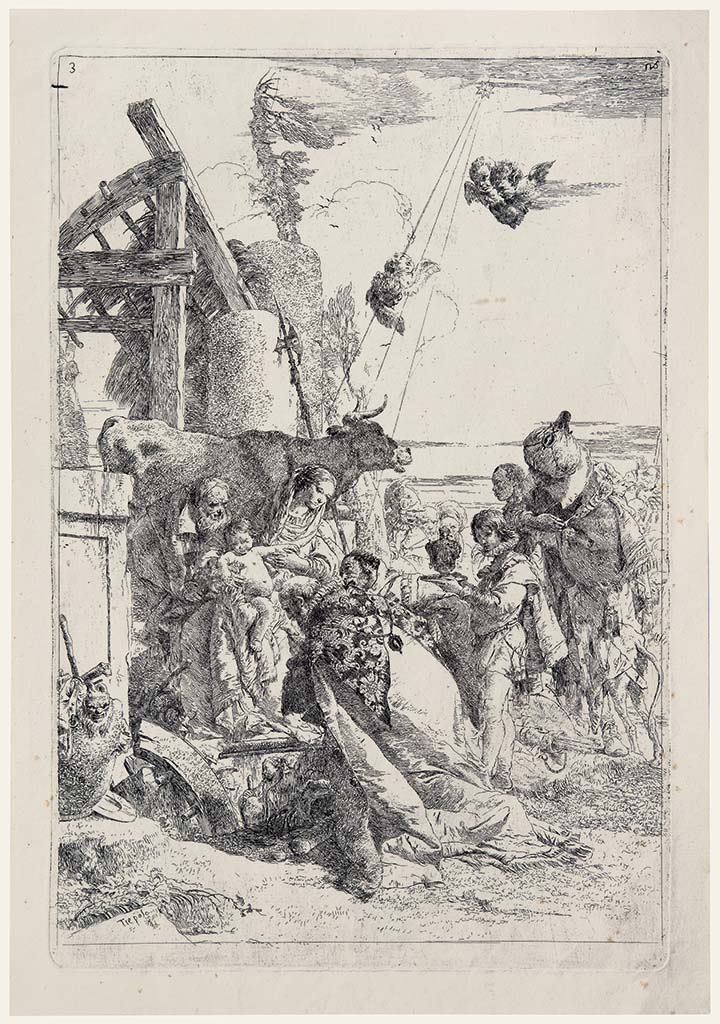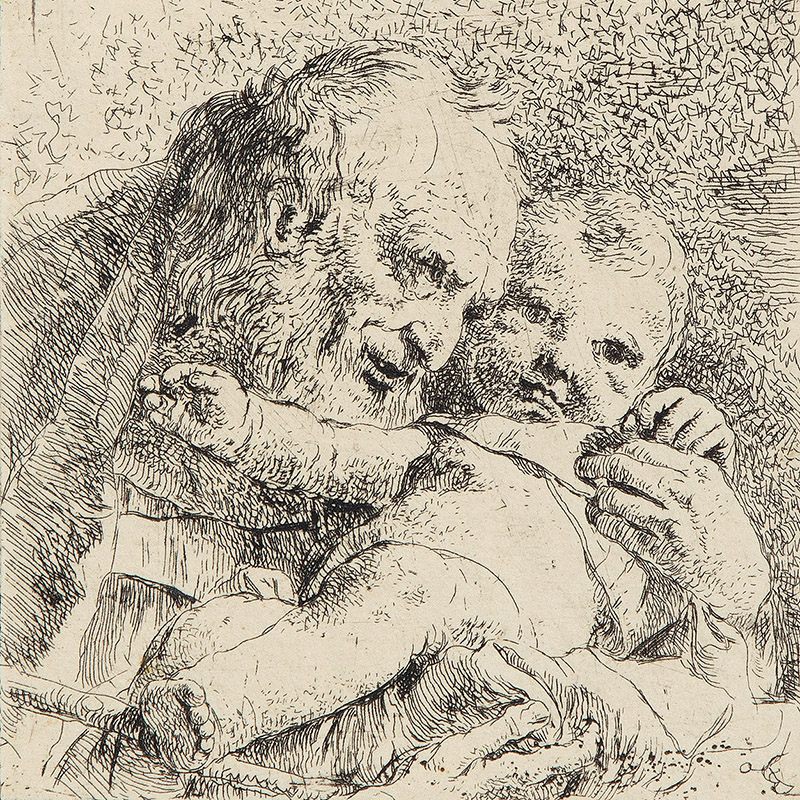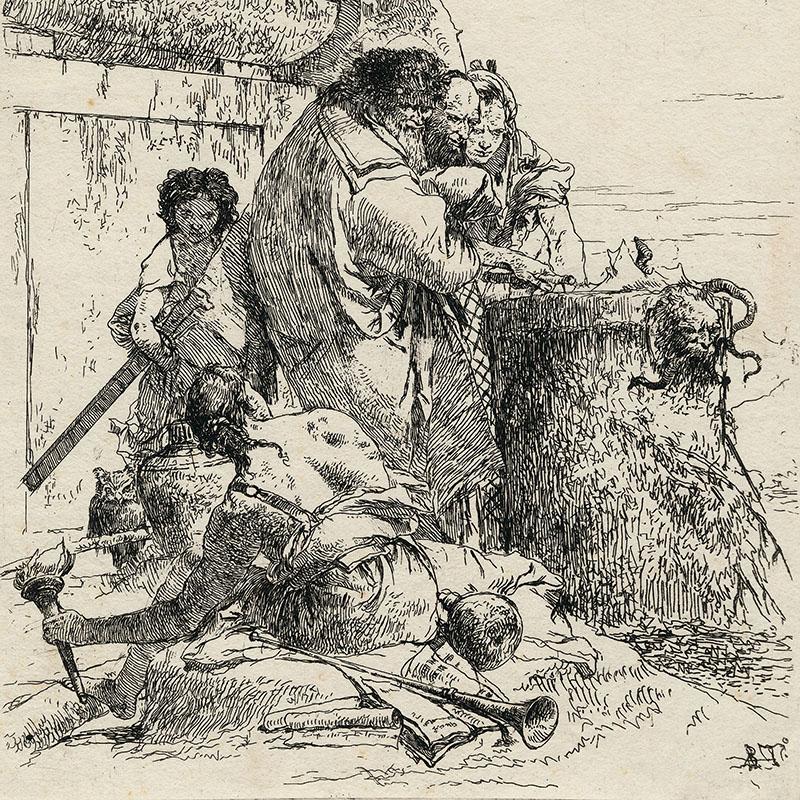Giovanni Battista Tiepolo
Venice 1696 - Madrid 1770
435 x 292 mm, 472 x 329 mm sheet
Signed on the stone lower left: Tiepolo
Numbered upper left 3
De Vesme I, Rizzi 27
A very good impression printed on laid paper of the 18th century, with watermark Double W, Open Crown and three crescent moon (click to see the recto and verso), from the artist’s life.
In pristine condition.
Giovanni Battista Tiepolo was one of the most celebrated painters of the 18th. Century.
From about 1715 when he executed his first public work, until his death in 1770, he was increasingly active, not only in his native Venice, but also throughout Europe, carrying in important commission for prestigious patrons has the Prince-Bishop of Würzburg and the King of Spain.
His workshop which included his sons Lorenzo and the older more talent Giovanni Domenico assisted him in producing the great fresco cycles of his mature years in Northern Italy, Würzburg, and Madrid.
Reference
Diane Russel, Rare etchtings by Giovanni Battista and Giovanni Domenico Tiepolo,
National Gallery of Washington, 1972, n.41 pag. 83.
Information on the master
Born into a wealthy family in Venice, Giambattista Tiepolo was recognized by contemporaries throughout Europe as the greatest painter of large-scale decorative frescoes in the 1700ies. He was admired for having brought fresco painting to new heights of technical virtuosity, illumination, and dramatic effect. In 1710 Tiepolo became a pupil of Gregorio Lazzarini, a successful painter with an eclectic style. He was, though, at least equally strongly influenced by his study of the works of other contemporary artists such as Sebastiano Ricci and Piazzetta and those of his Venetian predecessors, especially Tintoretto and Veronese. In 1719 he joined the Venetian guild of painters and soon turned away from the darker hues of the Baroque opting for sunny colourful tableaux instead. His first success testified to his new style: a series of frescoes on biblical scenes for the episcopal palace in Udine in 1726. Tiepolo's commissions came from the old established families of Italy, religious orders, and the royal houses of Spain, Germany, Sweden, and Russia. Tiepolo was equally prized as a draftsman: his powers of invention were boundless and his facility without equal. His imaginative prints enjoyed wide fame and their dreamlike and sometimes troubling imagery of sorcerers and punchinellos may have influenced Goya.
Other works of the master


